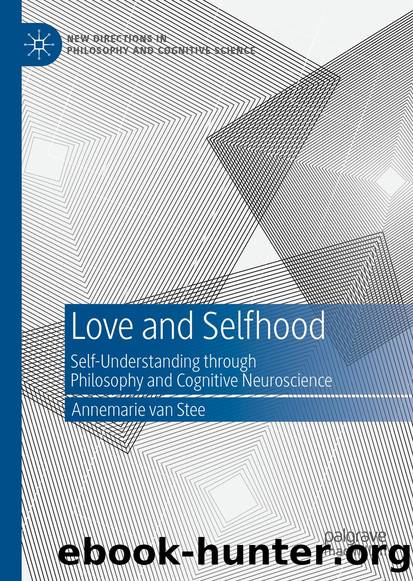Love and Selfhood by Annemarie van Stee

Author:Annemarie van Stee
Language: eng
Format: epub
ISBN: 9783031068010
Publisher: Springer International Publishing
Problems with Current Task Development
Current task development practices in cognitive neuroscience are not focused on the validity of tasks, nor on the conceptual implications of setting up a task in one way rather than another. I see four types of problems that this leads to. We encountered them in Chaps. 2 and 3 and can now understand them more systematically. Three of them are validity problems, the fourth is a problem of comparability between studies.
Validity Problems
First, tasks may be invalid. An early study in CNS of self-reflection had a face recognition condition as a task capturing âself processingâ. âIs this a picture of your face or of the face of a stranger?â participants were asked (Kircher et al. 2000). One may wonder whether any self-processing is necessary to complete this task at all. Lower-level visual processing seems able to do the job (broad nose: left button; narrow nose: right button). Even if there is some implicit recognition by participants that they are looking at a picture of themselves, it is questionable whether the processing of pictures of oneâs face is truly processing of self. After all, we experience ourselves as selves much more often than, and differently from, those few moments we encounter our face in the mirror each day. And at those brief mirror moments, we meet our selves almost as we encounter others: by witnessing outer appearances. Lack of validity is also something to watch out for when tasks that were developed in one context are taken into a different context.
Secondly, the validity of CNS research may suffer when biases are built into a task. CNS of self-reflection employs personality adjectives taken from lists (Anderson 1968) that exclude physical characteristics: âstrong-mindedâ is included, whereas âstrongâ is not. These lists thus embed an understanding of personality as being not of the body, which in turn includes implicit background assumptions of a difference between mind and body, with personality being of the mind. Furthermore, likableness ratings for these adjectives were obtained from university students. It would be interesting to investigate whether so-called blue-collar workers would be as positive about âintelligentâ, âopen-mindedâ, âearnestâ, âbroad-mindedâ, âwell-spokenâ, âeducatedâ, âcleverâ, âquick-wittedâ, and âbrilliantâ, which are all in the top 50 of most likable personality descriptors. Systematic limitations built into the task may thus reflect theoretical convictions of a researcher, but they may also reflect understandings present in the wider socio-cultural environment.
Finally, any task is bound to be limited in that it is bound to cover one aspect of a phenomenon only. This is different from the previous point. In this case a taskâs limitations are not so much based on researchersâ pre-existing understanding of a phenomenon, but simply reflect the need to manipulate one factor at a time in the experimental context. Instead of being based on socio-cultural or theoretical biases, these are coincidental limitations. It is important to be aware of these limitations nonetheless, as one cannot draw conclusions about the neural correlates of love, for example, based on one type of task only.
Download
This site does not store any files on its server. We only index and link to content provided by other sites. Please contact the content providers to delete copyright contents if any and email us, we'll remove relevant links or contents immediately.
Application of a Novel Technique for Clinical Evaluation of Nitric Oxide-Induced Free Radical Reactions in ICU Patients by Unknown(696)
Rosenâs Emergency Medicine Concepts and Clinical Practice by Ron Walls; Robert Hockberger; Marianne Gausche-Hill; Timothy B. Erickson; Susan R. Wilcox(574)
Oxidative damage to surfactant protein D in pulmonary diseases by Vitality Starosta1 & Matthias Griese1†(410)
Social Science Perspectives on Global Public Health by Vincent La Placa & Julia Morgan(375)
Constructing Canine Consent; Conceptualising and Adopting a Consent-focused Relationship with Dogs by ERIN JONES(330)
Organic Chemistry: An Acid - Base Approach by MICHAEL SMITH(304)
ADVANCED EMERGENCY CARE AND TRANSPORTATION OF THE SICK AND INJURED by Unknown(272)
Saunders Nursing Drug Handbook 2024 - E-Book by Unknown(265)
Davis's Comprehensive Manual of Laboratory and Diagnostic Tests with Nursing Implications by Unknown(250)
Socio-Life Science and the COVID-19 Outbreak : Public Health and Public Policy by Makoto Yano; Fumihiko Matsuda; Anavaj Sakuntabhai; Shigeru Hirota(247)
Diagnostic and Statistical Manual of Mental Disorders, Fifth Edition, Text Revision (DSM-5-TR(tm)) by Unknown(246)
Human Microanatomy; Cell Tissue and Organ Histology with Celebrity Medical Histories by Stephen A. Stricker(245)
Berne and Levy Physiology E-Book by Unknown(237)
Replacing the Dead by Mie Nakachi;(232)
Handbook of Skin Disease Management by Jiyad Zainab;Flohr Carsten; & Carsten Flohr(230)
Access to Medicines and Vaccines in the South : Coherence of Rules and Policies Applied by the European Union Commission by Stephen Kingah(227)
Deep Learning and Medical Applications by Unknown(222)
The Pocket Guide to Sensorimotor Psychotherapy in Context (Norton Series on Interpersonal Neurobiology) by Pat Ogden(219)
Advances and Technical Standards in Neurosurgery by Unknown(215)
